Walking the Thin Line
Dave Roe
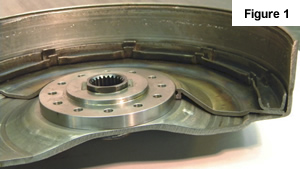
The toughest part of rebuilding any torque converter is not building a heavy-duty converter, but building the best converter possible for a price that is both competitive and profitable.
The late-model 518 is a prime example of this statement. When we get OE cores, the covers measure .160" to .165" thick if they are undamaged. The front covers can normally be cleaned up by machining off .005"of material. The challenge comes when we get a cover that was galled or damaged by a major lock-up failure. In these cases, you may have to machine off as much as .015", and at this point you end up with a cover that is only .145" to .150" thick. The question is, how far can you go? Where is the line between thick enough and no longer thick enough?
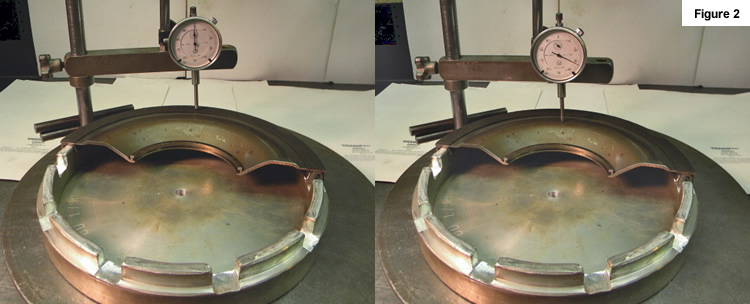 |
TCRA recommends .140" as a minimum thickness for the lock-up surface. I have talked with other builders about this and they draw the line at .140", but I draw the line at .150" thick. Below that, we part out another core in search of a cover. We all know that the cover can balloon slightly in some conditions. This problem becomes worse if the cover thickness has been reduced by machining. For shear strength and resistance to ballooning, the billet cover is the best way to go, but the cost of a billet cover raises the overall cost of the converter considerably. Cores are cheaper than billet covers, especially when you add a new ring gear.
Another area where we must walk the line is the converter lockup piston. In Figure 1, the cross-sectioned piston and cover have an interference problem. The thin cover and over-machined piston do not like to live together. To help identify the problem, you can use some simple tools and tests.
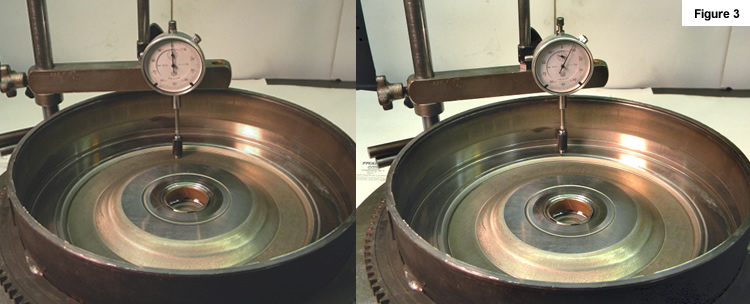 |
First, not all pistons are the same. The piston in earlier models can have a higher profile – I call these "high humps." We measure the difference from clutch surface to the highest point on the flywheel side of piston (Figure 2). A normal, post-bonded piston with a .070" lining has a height of .105" to .115". This is a normal measurement for 1996-later models. Pistons which measure .125" or higher are the high-hump variety commonly found in early converters. These pistons only can be used in early units or late ones with deep wells in the cover (Figure 3). You can use a cross-sectioned piston (Figure 1) to help find the shallow well covers or do a measurement.
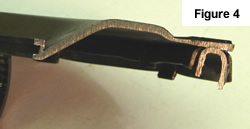
In Figure 4, notice how the piston surface tapers thinner from the outside to the inside. The thinnest point, where the piston transitions from surface to hump, is where ballooning will occur. This problem is made worse when the piston surfaces are over-machined or cut too far into the hump. Piston surface thickness can be measured with a bonding die, height gauge and dial indicator (Figure 5). You must measure the piston in two or three places because the thickness can vary. Use an average of your findings or the lowest measurement. The thickness of an un-machined piston, measured at thinnest point on the inside of the spring retainer, should range from .098" to .115". TCRA recommends a minimum thickness of .060" after machining for either regular or high hump style pistons. I draw the line at .075".
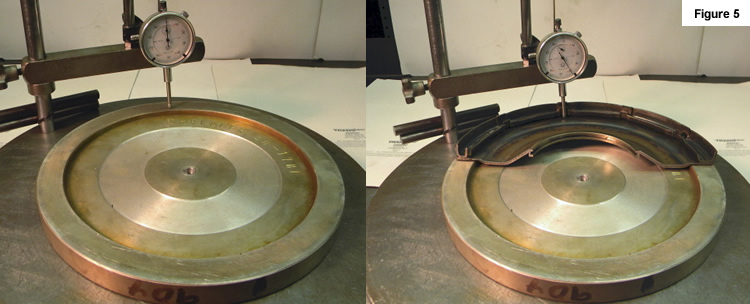 |
Remember that with this unit, we all walk the thin line.
Dave Roe is the manager of the torque converter rebuilding department at Fort Dodge Transmission, a transmission rebuilding company and full-service repair shop with 35 employees in Fort Dodge, Iowa. Roe has been with the shop since 1987, taking pride along with his coworkers in keeping in step with change and producing a quality product.
While Sonnax makes every effort to ensure the accuracy of technical articles at time of publication, we assume no liability for inaccuracies or for information which may become outdated or obsolete over time.